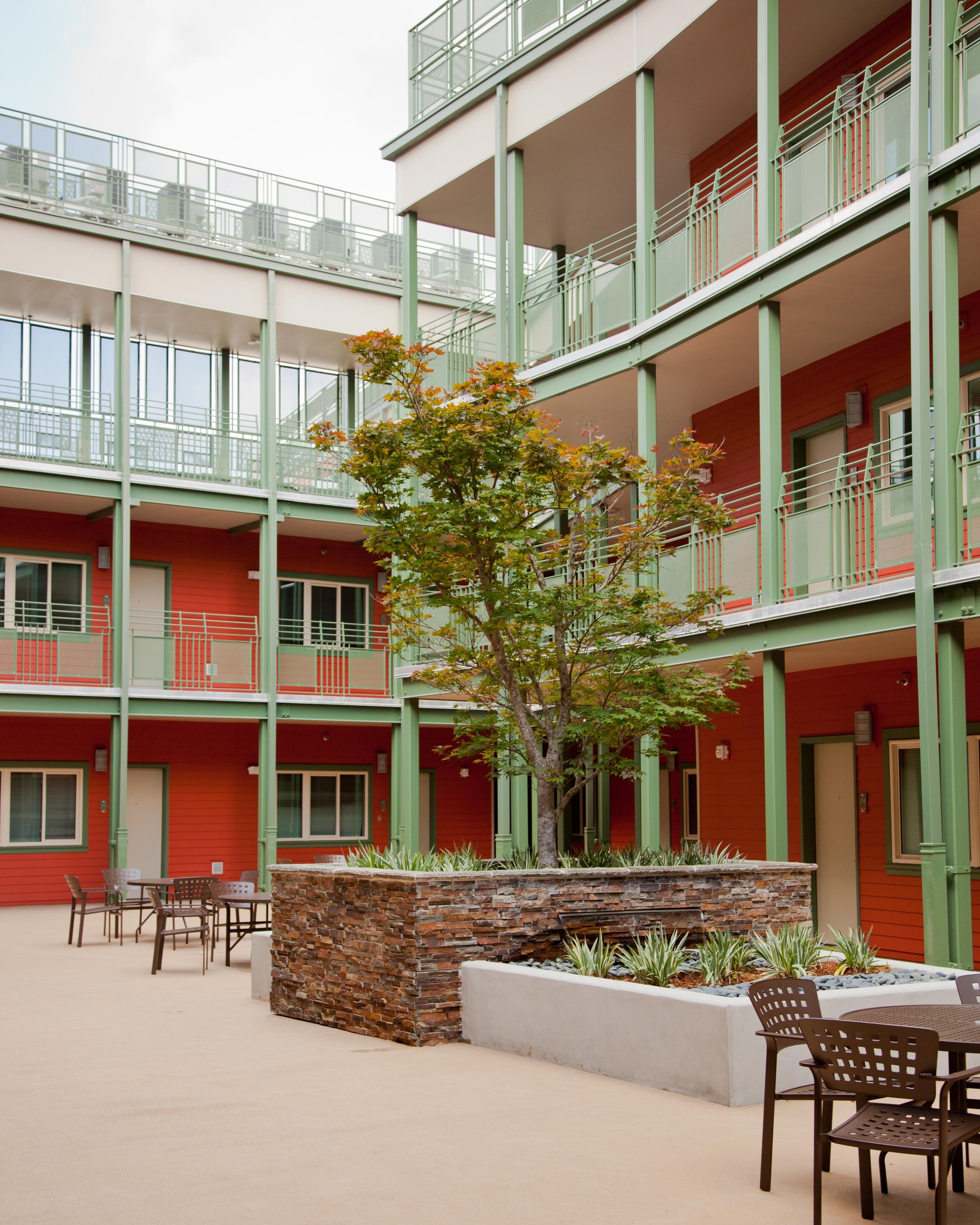
Out of 65 submissions from 32 countries, six public-interest design projects have just been announced as this year's winners of the International SEED Awards. The SEED Network and Design Corps have singled out these projects as those which best incorporated social consciousness, community outreach, and sustainability into their designs.
The 6 projects represent the diffusiveness of public-interest design today, and how, by looking through the lens of design, many diverse (and yet often re-occurring) social problems can be addressed.
The Winning Projects, which you can see on display at the 13th annual Structures for Inclusion conference at the University of Minnesota College of Design March 22-23, 2013, are: SAGE: Affordable Green Modular Classrooms, Gervais, Oregon; Puyallup Tribal Longhouse, Tacoma, Washington (Puyallup Tribal Reservation); Rosa F. Keller Building, New Orleans, Louisiana; Firm Foundation, Banjarmasin, Kalimantan, Indonesia; Sudan Jalle School, Jalle Payam, Jonglei State, South Sudan; Maa-Bara: Catalyzing Economic Change & Food Security, Lenya (Bondo District), Nyanza, Kenya.
More info on these extraordinary public-interest designs, after the break...

Firm Foundation
From the Jury: "We found the replicability of the project especially compelling for other communities facing similar issues. The project successfully combines economic opportunity, community building and reinventing relationships with the river in a highly innovative and contextual way. "
A re-design of the waterfront of The RT 14 region of Sungai Jingah in Banjarmasin, home to a community of low-income families whose modest livelihood and social interaction rely heavily on the resources of the Andai River, which has become a source of vulnerability due to lack of basic waterfront services.

Maa-Bara: Catalyzing Economic Change & Food Security
From the Jury: "a fascinating project that has the potential to have a tremendous social and economic impact on the population served. This project is particularly compelling because of its applicability to many developing countries facing similar issues of food scarcity"
The Maa-Bara project empowers local student groups in impoverished Lenya, Kenya, to sustainably grow fish and vegetables using “aquaponics” deployed on-site at school. A combination of aquaculture and hydroponics, this low-cost, low-tech method of farming re-circulates water and nutrients in a closed-loop system and can be built from off-the-shelf components readily available in the country. The system provides students with a consistent food supply as well as an affordable, scalable and replicable entrepreneurial means of constructing and operating an income generating system.

Puyallup Longhouse
From the Jury: "The jury was struck by the elegant combination of the principles of sustainability with cultural relevance, while providing a contemporary aesthetic."
The Puyallup Longhouse was designed with the goal of creating a community center and beautiful, relevant and affordable housing for members of the Puyallup Tribe struggling with the challenges of increased urbanization, high unemployment and low income. The design embraces the tribe’s culture and follows the concept of traditional longhouses where family, friends & community members interacted to perform such daily activities as singing, dancing, weaving and carving. Modern technologies supplemented the natural design strategy and led to homes that are much more energy efficient than current Washington State energy code.

Rosa F. Keller Building
From the Jury: "incredibly important to the city of New Orleans and a strong model for supportive housing throughout the U.S...This project is unique in the way that it integrates low-income people who have never been homeless with those who have. The socio-economic benefits of this project are immense and the design product provides dignity to both the residents and the recovering community."
New Orlean’s first supportive housing project, the Rosa F. Keller Building addresses the need for mixed income permanent housing as an option for the city’s most vulnerable homeless as well as for lower-income working people seeking safe & affordable places to live.

SAGE: Affordable Green Modular Classrooms
From the Jury: "a very replicable model that can be applied to a wide variety of locations to address the need for healthy and productive educational environments."
The SAGE Affordable Green Modular Classrooms address the need for a “healthier” version of the modular classroom which has become standard in over-populated school districts – and tackle the issue of making green design affordable.

Sudan Jalle School
From the Jury: "The compelling narrative coupled with a simple, elegant, scalable design solution placed the Jalle School project among the jury’s favorite entries. The project successfully meets the needs of a vulnerable, yet incredibly resilient community with great dignity and innovation."
The new Sudan Jalle School in South Sudan’s war-torn Jonglei State, helps fulfill the community’s need for long-term disaster recovery by creating a permanent structure for education, investing economically in the community, and creating a community-owned gathering place. Sudan Jalle will be the first school in the region, the only permanent structure within seven miles, and likely the only flood-resistant building in the region.
HONORABLE MENTIONS:
Cultural Preservation of Kam Minority Heritage in Dimen Village, China through Design- Dimen Village, China
Guardians Institute Big Chief Donald Harrison, Sr. Museum and Cultural Arts Center
Ichi Go Ichi E Restorative Garden- Seattle, Washington
InHouse OutHouse- Houston, Texas
LRGV Colonia Planning & Implementation- Lower Rio Grande Valley, Texas
Masonic Amphitheater- Virginia
PackH2O water backpack: Alleviating the Achilles Heel of the Global Water Crisis
Peacock Commons; Affordable Housing for Emancipated Youth- Santa Clara, California
Piet Patsa Performing Arts Centre- Vijoenskroon, Free State, South Africa
Stacked Tectonics: JDT Orphanage Primary School- Calcutta, India
You can see last year’s winners here: 2012 Winners
More information at DesignCorps.org





